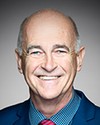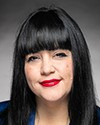Thanks for the question. It's very easily answered.
First of all, the harvesting is a no-brainer. We have all the infrastructure in place with the unemployed fishers and their large vessels. We've talked to several of the processing plants, including one on Vancouver Island, Hub City Fisheries. Their leader is a board member.
There are two markets. The one we initially started getting a very positive response from was the Asian market, specifically the Chinese and the Japanese market. It's broken down into pelts, meat and oil, but it's closed right now because of COVID. We started poking around the commercial sector, and bingo: There's a five-million-pound commercial bait requirement for commercial prawn fishermen and crab fishermen. We have talked to several first nations people who have used this bait and they've said it's fantastic.
In my opinion, this is a no-brainer, because the infrastructure is already in place to handle this situation. We just need a green light to go out and, again, bring it back into balance, and then assess.
I hope that answers your question.





